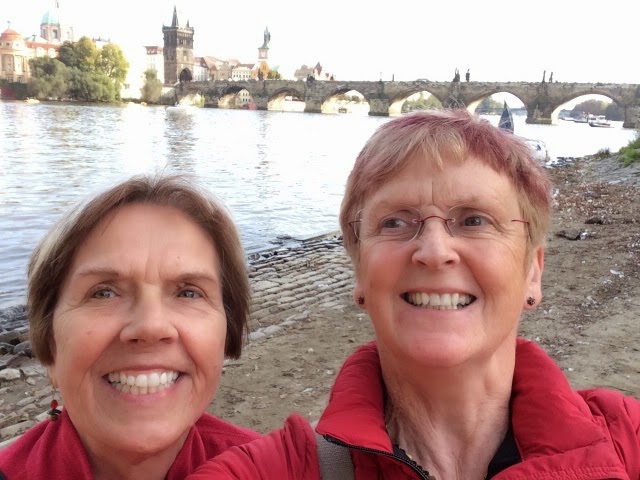A view of Prague Castle with St Vitus Cathedral.
The revolution in 1989 was a Velvet Revolution so Dr Anne expected great advances in the 30 years since she was there.
YES...
There are thousands of tourists of all nationalities being walked around the town on foot, by bike, by car.
By bike.
By ?
By vintage cars.
By foot.
YES...
There are cafes and restaurants galore with coffee and cake, food and drinks.
Lois at the cafe at Kafta's museum. The cakes are coffee and hazelnut wafers. Delicious.
YES..
There are ticket touts and scam merchants selling tat.
The sun shines.
YES...
There is Prada, Gucci, Zara, Debenums and C&A...
BUT...
There is homeless everywhere, under bridges, on park benches, hanging around the railway station, begging on the streets;
Bureaucracy is archaic. Lois went to post some cards. She had to get a number for a counter that sold stamps. She had to queue until her number came up. She was at the wrong counter and she had to start all over again. The same happens in museums where the ticket has to be checked every time one enters a room.
In museums and visitor attractions people give the impression that they don't like what they do. Heads are down, hands are behind their backs, they shuffle. There are no smiles.
There is a mixture of drabness and vibrancy where Dr Anne had only expected the latter.






















































